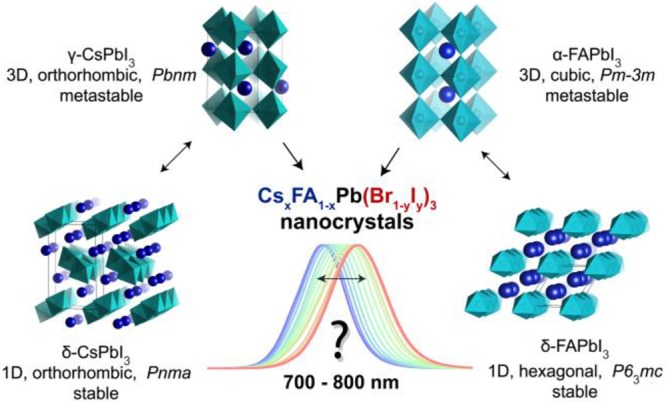Figure 1.

Formabilities of the 3D and 1D polymorphs of CsPbI3 and FAPbI3 compounds and the goal of this study: near-infrared emissive LHP NCs. The PbI6 octahedra of α-FAPbI3 NCs are assembled in a 3D cubic metastable lattice, which spontaneously converts into a 1D hexagonal version (nonluminescent) at room temperature. In the case of CsPbI3, the PbI6 octahedra of FAPbX3 NCs are assembled in a 3D orthorhombic metastable lattice (γ-phase), which eventually converts at room temperature into a 1D orthorhombic δ-phase (nonluminescent). The goal of this study is highlighted with a question: can high-throughput microfluidic screening identify the existence of stable multinary CsxFA1–xPb(Br1–yIy)3 phases in the form of colloidal NCs, which cover the PL region of 700–800 nm, i.e., in-between ternary 3D phases (CsPbI3 and FAPbI3)? We note that bulk α-FAPbI3 emits at 840 nm and γ-CsPbI3 emits at 710 nm, whereas their NC counterparts are commonly reported to emit at ≤700 and ≤780 nm, respectively.6,8−12,69 It is also noted that the space groups reported for the γ- and δ-phases of CsPbI3 do not differ (while their structures manifestly do), as they can easily be interconverted by simple axis permutations. We used the original Pbnm and Pnma for the γ- and δ-forms, respectively, to maintain consistency with past literature.
